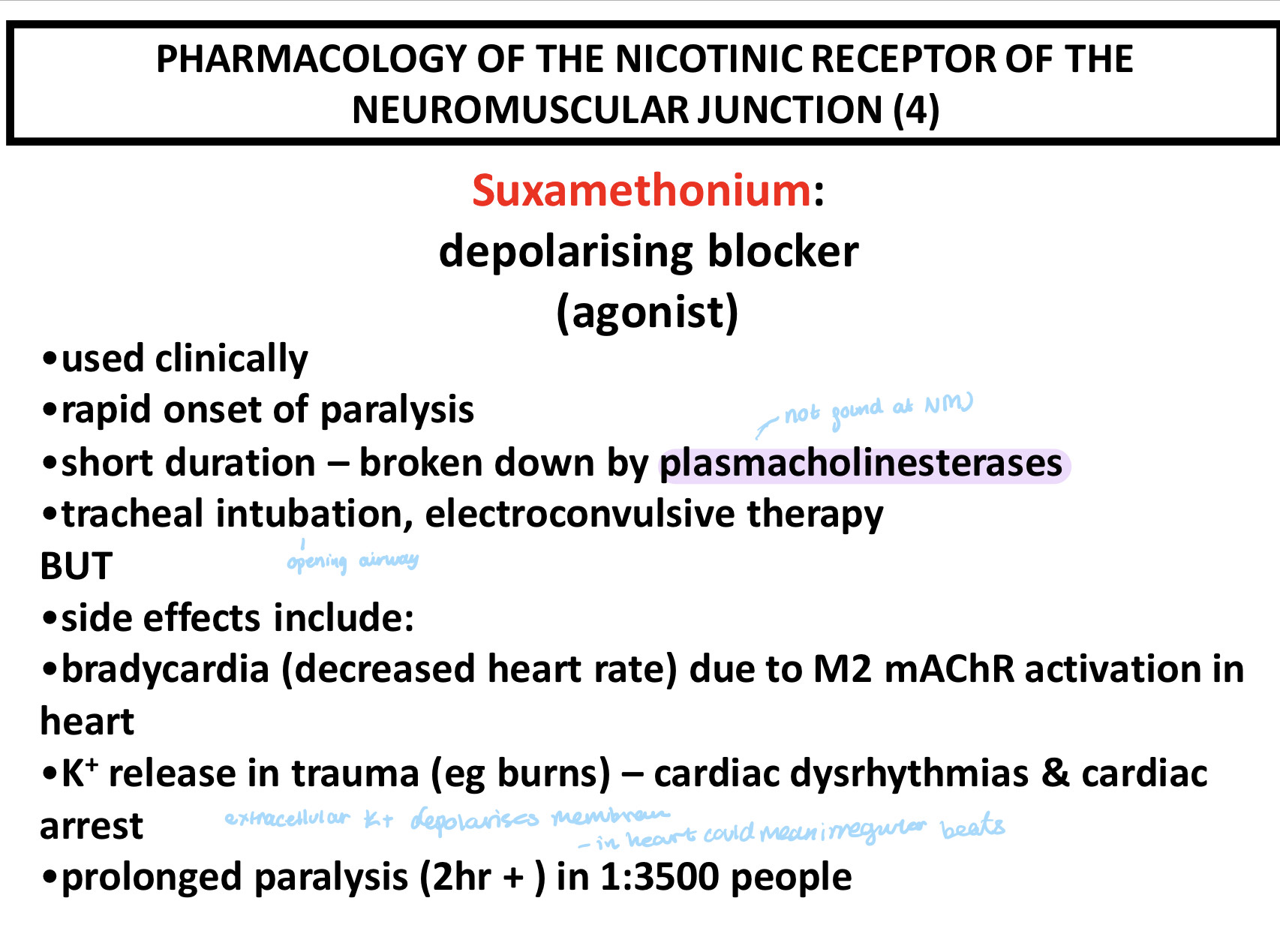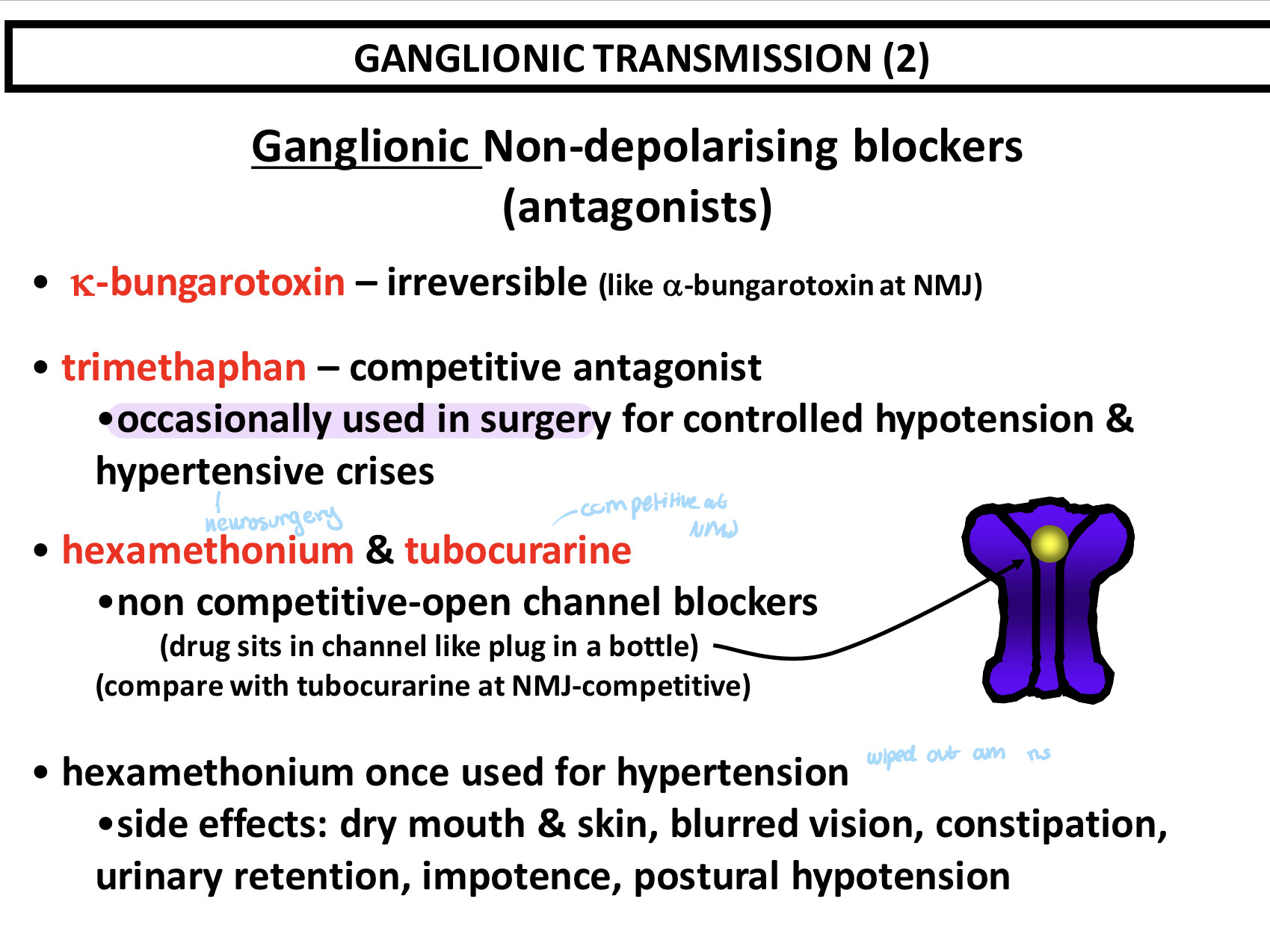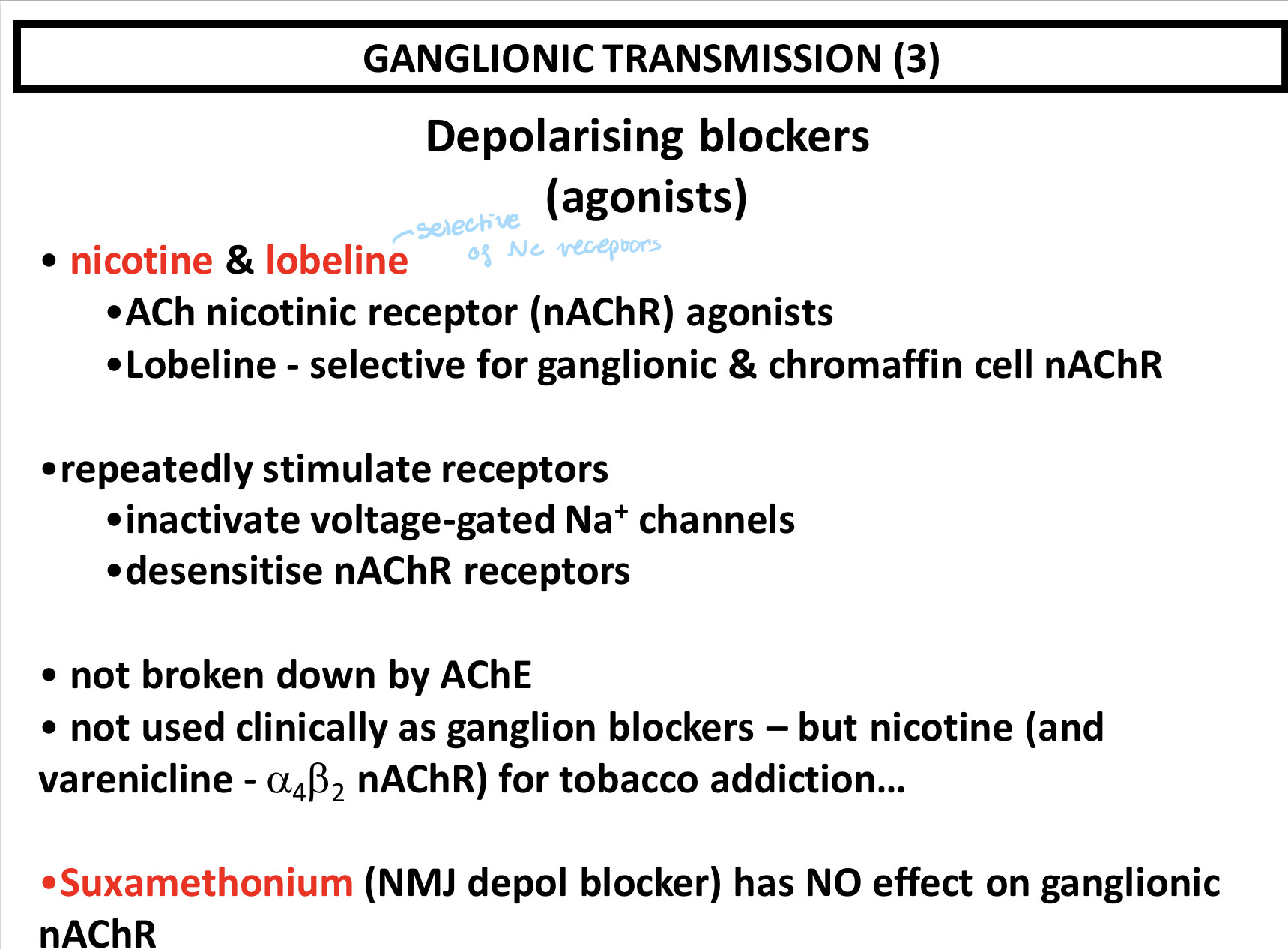nicotinic receptors of the neuromuscular junction and autonomic ganglia
Synthesis
The first step of synaptic transmission in nicotinic receptors is the synthesis of the neurotransmitter acetylcholine (ACh).
Choline is first retaken into the presynaptic terminal. this is dependant and blocked competitively by hemicholinium 3 which is not used clinically due to its ability to paralyse. Choline acetyltransferase synthesis ACh from precursors choline and acetyl coenzyme A which is given by mitochondria. There can be cholinergic deficits found in alzheimer’s if the enzyme is blocked by amyloid proteins
Storage
Storage is done for two main reasons:
for protection against metabolising enzymes
to have a high concentration of Ach
The uptake and storage of Ach in synaptic vesicles is inhibited by vesamicol which is also not used clinically. This is because it prevents the storage of Ach into vesicles which leads to slow developing muscular paralysis
The mechanism for packaging has 2 steps and is indirectly reliant on ATP. In the first step, ATP is hydrolysed and H+ ions are packaged into the vesicle. In the next step, 2H+ ions are exchanged for one ACh through an antiporter
Release
Release of the packaged ACh is first triggered by the influx of Ca2+ ions into the presynaptic bulb. This is done when an action potential reaches the presynapse and triggers VG Ca2+ channels to open through the influx of Na+. This then triggers an enzyme to metabolism the protein holding the vesicles to the cytoskeleton and fuse with the presynaptic membrane. There are a few toxins that can mess with this process:
Tetrodotoxin blocks VG Na channels which means that as there is no effect from the action potential, there is no release. This is also the basis for local anesthetic
Ca2+ channels (P/Q and N types) are blocked by toxins such as conotoxins
Botulinum toxin blocks vesicle fusion by cleaving proteins involved in fusion
Dendrotoxins block VG K+ channels which leads to more Ca2+ influx as Na+ remains open leading to muscle spasm
Sometimes, toxins can be given to help relieve pain such as cone snail venom which has been developed into Ziconotide which acts as a selective N-type VG Ca2+ calcium channel blocker and is given by the intrathecal route
Mechanism of action and uses of Botulinum toxin
In normal transmitter release, SNARE proteins on the vesicle membrane bind to syntaxin and SNAP 25 proteins to form a complex that helps in the exocytosis of the neurotransmitter. Synaptotagmin is thought to be a Ca2+ sensor that regulates this. Botulinum binds to this and has its heavy chain and light chain cleaved. The light chain then acts as a protease that cleaves the docking proteins so no ACh is released
the uses of botulinum include:
to treat muscle spasms such as eye twitches and tremors
treatment of sialorrhea and hyperhidrosis
cosmetically to reduce the appearance of wrinkles
The black widow spider releases a toxin known as alpha latrotoxin that works by releasing massive amounts of ACh through spontaneous fusion. This leads to muscle spasm after which there is no activity due to depletion of the vesicle pool, desensitisation of the NMJ, inhibition of endocytosis of Ca2+ and a distended terminal meaning paralysis.
There are two ways in which this toxin is thought to work both of which promote the release of Ca2+
Activation
Release of a vesicle gives a “quanta” of transmitter. At the NMJ, each quanta gives rise to a miniature end plate potential via the activation of the nicotinic receptors. These summate to give an end plate potential which if large enough can initiate an action potential and hence muscular contraction
Inactivation
Activation of Ach is terminated by acetylcholinesterase which breaks ACh down into acetate and choline which is then taken back up into the presynaptic terminal. Drugs that inhibit this enzyme increase the concentration and effects of ACh however these can cause muscle spasms
Competitive non-depolarising blockers such as Tubocurarine, Vecuronium and rocuronium reduce the amount of neurotransmitter released but can be outcompeted by anticholinesterases
Tubocurarine
arrow poison - kills prey by respiratory paralysis
decreased BP due to ganglion block and vasodilation
Vecuronium and rocuronium
allow the concentration of gaseous anesthetics to be reduced which decreases the pressure put on respiratory receptors
few side effects
rocuronium has rapid onset
Irreversible non depolarising blockers bind covalently and block NMJ. They have two phases of action:
PHASE 1 includes persistent activation of endplate nicotinic receptors by the blocker. This leads to prolonged depolarisation of the endplate that means inactivation of VG Na+ channels
PHASE 2 means that when the endplate is repolarised, the receptor desensitisation maintains the blockade
 Ganglionic transmission
Ganglionic transmission
Ganglionic blockers reduce the actions of both the sympathetic and parasympathetic nervous systems

